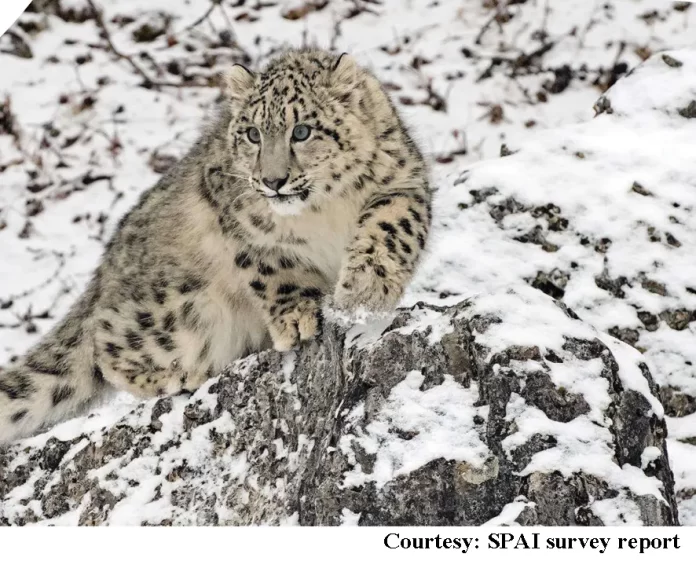[ Bengia Ajum ]
ITANAGAR, 31 Jan: In a hugely encouraging report, 36 snow leopards are estimated to be living in Arunachal Pradesh.
This is as per the survey report of the Snow Leopard Population Assessment in India (SPAI), which was conducted from 2019 to 2023 across India.
A total of 718 snow leopards are estimated to be living in India.
Based on the analysis of the survey, Ladakh has the highest estimated population of the animal (477), followed by Uttarakhand (124), Himachal Pradesh (51), Arunachal (36), Sikkim (21), and Jammu & Kashmir (9).
In Arunachal, surveys were conducted in districts like Tawang, Shi-Yomi, West Kameng, Anjaw, Dibang Valley and Changlang (Namdapha National Park).
A total of 2,400-km trail was surveyed to record snow leopard signs in the state. Cameras were deployed at 115 locations for 8,775 trap nights. Also, around 22,616 kms of effective areas have been sampled for snow leopard occupancy, prey, and habitat.
During the survey in Arunachal, snow leopard occupancy was recorded in 29,500-km area and their estimated presence in 14,156-km area.
Union Environment, Forest & Climate Change Minister Bhupender Yadav released the SPAI report during the National Board for Wildlife meeting held in New Delhi on Tuesday. The SPAI survey is the first-ever scientific exercise that reported snow leopard population of 718 individuals in India.
The Wildlife Institute of India was the national coordinator for the exercise that was carried out with the support of all snow leopard range states and two conservation partners: the Nature Conservation Foundation, Mysuru (Karnataka), and WWF-India.
The SPAI covered over 70 percent of the potential snow leopard ranges in the country, involving forest & wildlife staffers, researchers, volunteers, and contributions from knowledge partners.
Covering approximately 1,20,000 kms of crucial snow leopard habitats across the trans-Himalayan region, including the union territories of Ladakh and J&K, and states such as Himachal Pradesh, Uttarakhand, Sikkim, and Arunachal, the SPAI exercise was conducted from 2019 to 2023.
In a statement, the ministry informed that the survey was done using a two-step framework. “The first step involved evaluating snow leopard spatial distribution, incorporating habitat covariates into the analysis, aligning with the guidelines of the national population assessment of snow leopards in India by the environment, forest & climate change ministry in 2019. This systematic approach included assessing the spatial distribution through an occupancy-based sampling approach in the potential distribution range,” the ministry informed.
It added that, in the second step, snow leopard abundance was estimated using camera traps in each identified stratified region.
The snow leopard is classified as ‘vulnerable’ by the International Union for Conservation of Nature. Its numbers in the wild face multiple threats – from habitat loss and poaching to infrastructure development.



